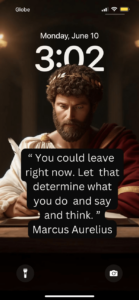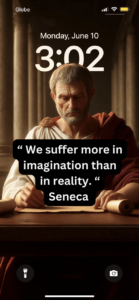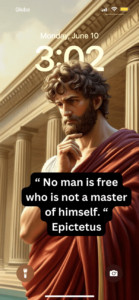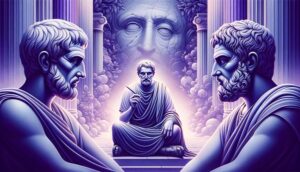When a friend is facing uncertainties from life challenges, we are almost always obliged to cheer him up. We give him hope by saying some of the most positive things we could think. Things like “It will be okay.”, “There is always a rainbow after the rain.” the list goes on. However, the Stoics argue that this is not the best way to calm an anxious friend. The better alternative is to help a friend go through what the Stoics called negative visualization – that is to convince him to imagine the worst-case scenarios that could happen. It is with this Stoic attitude that Stoicism is sometimes associated with pessimism. Why would Stoics then advocate negative visualization? How could it makes us achieve more tranquility, improve our well-being, and contribute to our own happiness?
1. Plan Ahead
Realistically, things will not always turn the way we hope it to be. Planning allows us to take immediate action especially if the things that concern us are urgent and of paramount importance.
2. Lessen the Impact
A lot of the things surprised us not because of their nature and severity but because we are not in the habit of expecting them. When we are heading to work and it suddenly rains, our negative reaction to it is not because rain is an unusual thing but because we did not expect it to rain when we are about 10 minutes from being late. As the Stoic philosopher Seneca puts it,
“What is quite unlooked for is more crushing in its effect, and unexpectedness adds to the weight of a disaster. This is a reason for ensuring that nothing ever takes us by surprise. We should project our thoughts ahead of us at every turn and have in mind every possible eventuality instead of only the usual course of events” Letters from a Stoic
He would then advise to his friend Lucilius:
“Rehearse them in your mind: exile, torture, war, shipwreck. All the terms of our human lot should be before our eyes.” Letters from a Stoic
When we expect negative things to happen we become less reactive when they do happen.
3. Minimize Hedonic Adaptation
This is my personal favorite and I think the most important. To understand hedonic adaptation, remember the time you crave for the latest iPhone. After saving a few months of money, you finally bought one for yourself. You enjoy it in weeks to come but after a few months, you are no longer as excited as you were when you first had it. Hedonic adaptation is our natural tendency to return to the previous level of happiness after an initial surge of positive emotions (usually pleasure). It has a wide range of applications because our desires our limitless. It could happen in our romantic relationship, wealth, etc. Seneca has an early description of his kind of human behavior.
“At last, then, away with all these treacherous goods! They look better to those who hope for them than to those who have attained them “ Letters from A Stoic
What does negative visualization have to do with hedonic adaptation? By imagining that we will lose the things we currently have, we will revisit the positive emotions that initially drove us to those things. If we constantly remind ourselves that we could lose anything that we possess, we tend to appreciate them more. The Roman Emperor and Stoic philosopher Marcus Aurelius put it,
“Do not indulge in dreams of having what you have not, but reckon up the chief of the blessings you do possess, and then thankfully remember how you would crave for them if they were not yours.” Meditations
One final note on negative visualization especially on its effect on minimizing hedonic adaptation. This technique might make sense to you (hopefully) but I guarantee a few weeks after reading this article you will find again resenting things you were once grateful for. This is why I do a lot of journaling as the Stoics would always recommend doing.
In my previous article, How I write my Stoic Journals I explained how I use writing as a way to get things out of my head. I also used it to track my habits including negative visualization especially with the things that I have (my family, good-paying and flexible job, good health, etc.). It only takes me 2-5 minutes to do my habit tracker journal but I can’t tell you enough how negative visualization revisit and add more values to things I currently have. So if you can, please make journaling a daily habit.





